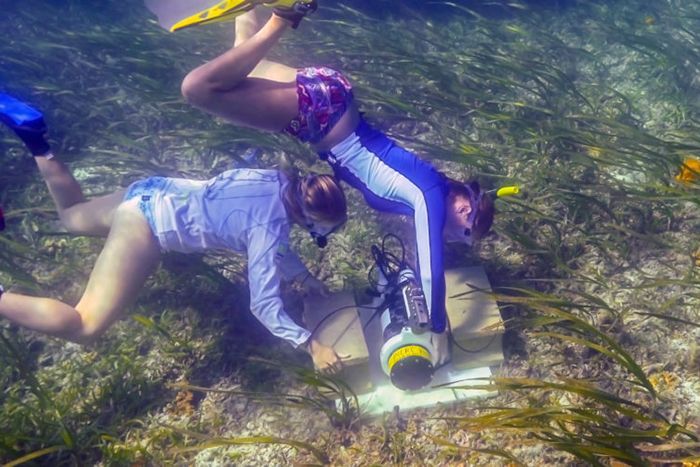Natasha Batista, Earth Systems ’18, and Holly Francis, Ocean Engineering ’19, were curious about the ocean currents that move nutrients and sediments across seagrass beds and throughout the bay. Part of their interest in this question was due to the fact that it required understanding the ocean as a system across disciplines.
“Seagrass has largely remained unstudied in Palau compared to coral reefs, yet it may comprise a highly influential ecosystem with the potential to locally counteract ocean acidification,” Francis said. These marine plants form underwater meadows that can create drag in the water column during different oceanic conditions.

Holly Francis and Heidi Hirsh carry out a research project in seagrass beds while in Palau. (Image credit: Kurt Hickman)
Batista and Francis, along with Stephen Monismith, professor of civil and environmental engineering, and teaching assistant Heidi Hirsh, a doctoral candidate in Earth system science, measured the velocity of water moving through the water column above seagrass beds at different heights.
The team processed that data to learn that the tidal flow in the bay has a net flow out toward the ocean and that the bottom drag is relatively much weaker when flows are stronger because of the way that seagrass is bent by flow.
“This information is important if you want to get a holistic understanding of how Nikko Bay functions,” Batista said. “If people want to look further into Nikko Bay and how the seagrass beds can be a buffer or nursery for corals and larger species, you want to understand all components of it.”